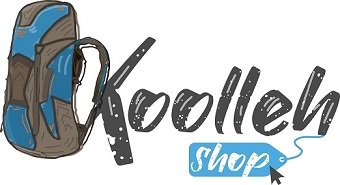A look at Qeshm handicrafts

Qeshm Island handicrafts, along with all its natural and historical beauties, has been one of the most important sources of attracting tourism and earning economic income of the indigenous people of this island, which unfortunately due to some negligence, this important artistic and economic source has been neglected.
With the approval of the Qeshm Comprehensive Development Plan in 2001, the plan to revive and promote handicrafts was emphasized with emphasis on its implementation. Prior to the approval of this plan, the common handicrafts in Qeshm Island were limited to the weaving of decorative ribbons (skein weaving), embroidery and needlework with the local names of Khos embroidery and glabton embroidery. But recently, the Handicrafts Organization and the Qeshm Free Zone Organization, while maintaining and improving the quantity and quality of existing handicrafts, introduced new disciplines such as carpet weaving, kilim weaving, painting, mat and basket weaving, and the production of various handicrafts from aquatic remains. Qeshm Island especially educates the youth.
The remaining mat weaving and baskets in Qeshm have a long history due to the existence of small and large groves on the one hand and the need of families for cheap, durable and manufactured dead day items and supplies in Qeshm. In recent years, due to the general tendency to consume goods that use natural fibers instead of synthetic materials, craftsmen in this field have been encouraged to invent and manufacture delicate and beautiful products.
Qeshm Island mats and baskets are made from palm tree leaves, so that the palm tree strands are boiled in solid colors, or colored wool palms are used to weave around ready-made mat strands while weaving, and geometric designs or flowers and plants. They put a novelty on it.
Products made from palm tree fibers mainly include baskets, handbags, fruit containers, bread holders, hats, lampshade caps, bird cages and wicker mats. Recurrence of oud or barbat as one of the stringed musical instruments that is played with the percussion has long been associated with the culture and documents of the local people of Qeshm Island.
To make incense sticks, wooden strips prepared from different types of wood, walnut, maple, olive, etc., are carefully stacked and glued together on the mold maker.
The difference in the natural color of the wooden strips, which are placed one by one or with various other decorations, gives more beauty and effect to the structure.
After making and completing the body, the body of the incense is sanded and varnished, and in the final stage, special incense wires, some of which are made of plastic and some of which are made of silk, are installed as drainage.
Kilim weaving The kilims produced in Qeshm, which are woven with special delicacy by local women and girls, have geometric patterns common in Iranian kilims and are sometimes inspired by the local designs of the island, and wool yarn and fabric are used in their weaving. The main working tool in the fat of these kilims has a metal vertical, with the ability to move.
The most common size of kilims in Qeshm is 80 x 100 and 100 x 150 cm, which are used as underlays and rugs. This type of kilim is double-sided and its features include light weight, foldability and small volume. Indigenous women of Qeshm sometimes produce various items of cushions, bags and suitcases by combining kilims and leather.
Traditional ribbon weaving and embroidery of Qeshm Island women use metal palms and silk fibers or synthetic fibers to embroider, embroider, and weave decorative ribbons in a wide variety of designs and colors. In such a way that while intertwining palms and various fibers with a special artist, they have created more than 50 types of designs and patterns in ribbon weaving (skeptic weaving).
Combining glabton, embroidery and embroidery with colorful sequins is the most important art of the island’s indigenous women in decorating their local costumes. Qeshm Island women embroidered and embroidered glabton are used in belts, bags, keychains, cigarette cans and curtains and decorative clothes. Painting Painting or miniature, which mainly belongs to the city of Isfahan, has been especially welcomed among the youth of Qeshm Island.
So that the common designs of this art such as hunting ground, polo, historical and natural landscapes and the image of legendary birds and animals are drawn using water color among these young people from another dimension and inspired by the natural and historical landscapes of the island.
Products made from aquatic remnants of oysters, oysters, corals and other aquatic remnants are among the materials that due to their high fineness and fragility, their preparation for making various objects requires great care and skill.
Due to the abundance of these materials on the shores of Qeshm Island, the making of these objects from aquatic remains has attracted a considerable number of the island’s indigenous youth. Among the various products obtained from aquatic remains on Qeshm Island, we can mention various types of statues, frames and decorative paintings, fancy pendants, necklaces, bracelets, earrings, vases and cigarette butts.
Qeshm Island economists believe that these products have gained a safe market among those who are interested in having objects of marine origin.






